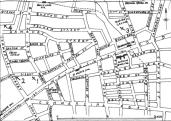|
Explore JTR
- Maps
|

|
|
Explore JTR
- Maps
|

|
|
[A]
[B]
[C]
[D]
[E]
[F]
[G]
[H]
[I]
[J]
[K]
[L]
[M]
[N]
[O]
[P]
[Q]
[R]
[S]
[T]
[U]
[V]
[W]
[X]
[Y]
[Z]
|
A
B
C
D
E
F
G
H
I
J
K
L
M
N
O
P
Q
R
S
T
U
V
W
X
Y
Z
Many THANKS to the sources that have contributed to this page:
A-Z
ARU
BLPM
CBJTR
Daily News
Daily Telegraph
Evening News
FSOL
GBA, 1888
GFP, 1888
HITM
JPVE
JTRDH
JTRUF
MOL
MQ
MSEE
MWOD
NFW
OSM, 1894
PI/AMP
RBRM
Ripperologist, No.22 & No.23
RUKI
SCL
SF
SGFC
Times
TPC
VLM;
WW